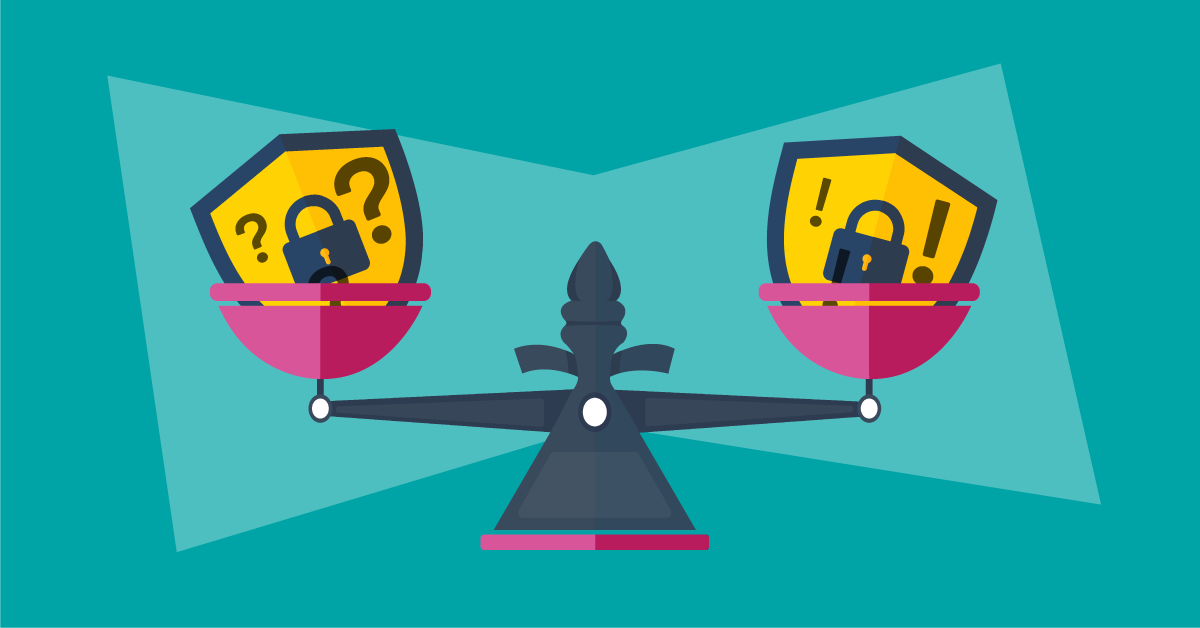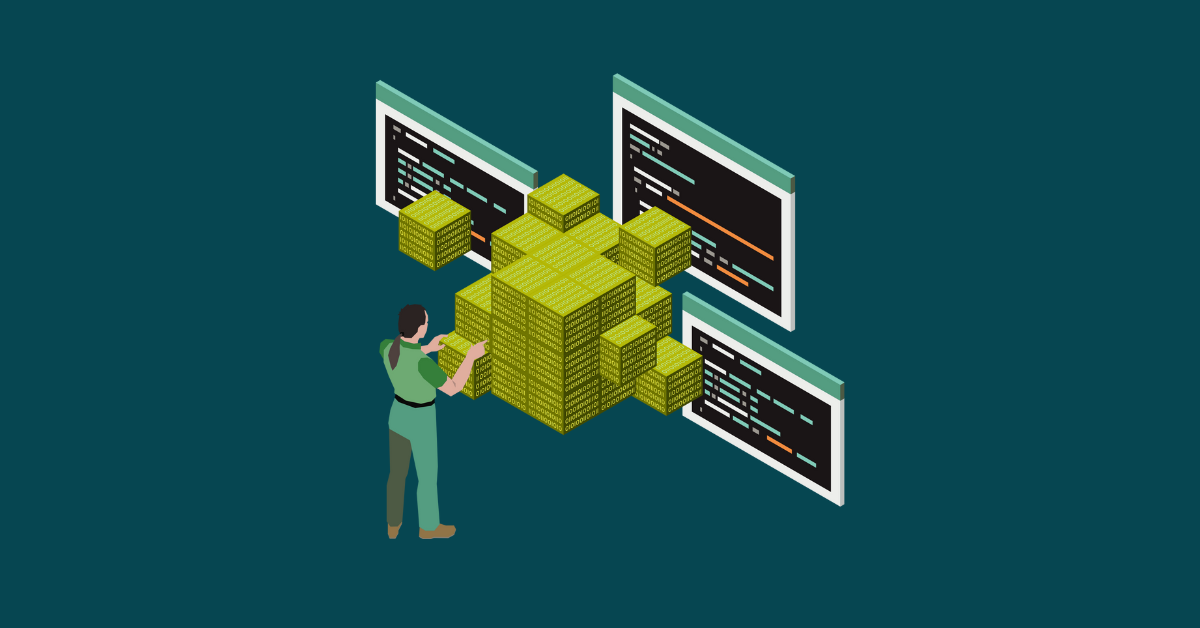

The digital-first trend across all industries means that technology is driving long-term success. Regardless of the end product, software is the backbone of most organizations. Between the rise of cloud-based platforms and the value of big data, the increasing practical — and often legal — requirements of secure application development have moved security from being a mere afterthought to the heart of DevOps.
In the not-too-distant past, a specific team handled security at the end of the software development process. Since the development process often lasted months, if not years, this was a viable solution. However, with most companies adopting an agile mindset, the development process is now composed of short, frequent cycles in a continuous DevOps workflow. However, using an agile DevOps workflow with an outdated security model leaves your applications exposed and vulnerable to attack by bad actors.
When security isn’t addressed until the end of the development cycle, it becomes inefficient, time-consuming, and costly to fix serious issues. This approach often eliminates the advantages that an agile environment is designed to produce by delaying your launch and increasing your development cycle times. Implementing a DevSecOps culture mitigates these issues by addressing minor problems before they become significant, so innovation and delivery aren’t interrupted.
DevSecOps stands for development, security, and operations. Like agile development, DevSecOps is a mindset that encompasses the entire development process from start to finish. DevSecOps integrates security as a shared responsibility into the complete software development lifecycle. With a DevSecOps mindset, security is a consideration from the very beginning — not just as an afterthought. DevSecOps is a continuous delivery, security-focused software development life cycle (SDLC).
DevSecOps incorporates tools, but it goes beyond them as well. While DevSecOps includes elements such as automating security gates and adding security features to your IDE, the most essential component of DevSecOps is the shift from security being the province of one department to the job of everyone at every step. Since many developers see security as a barrier to innovation, this mindset shift must be a cultural change across your business.
It’s no longer enough to schedule downtime to review and patch security issues. The nature and number of cybersecurity threats are accelerating at such a pace that you have to assume you’re constantly under attack and address threats accordingly. As a result, DevSecOps treats security as a built-in component rather than a perimeter fence.
The original DevOps model was designed to speed up the development and delivery of software by increasing communication between development and operations teams. However, siloing security mitigates the effectiveness of the DevOps model and slows down the process. Software development has become a complex, holistic, and iterative process that requires security integration at all stages. The benefits of using the DevSecOps approach are primarily related to speed and security and include:
When security is everyone’s responsibility, the code is reviewed, scanned, audited, and tested throughout the development process. This built-in redundancy means threats can be discovered earlier and fixed faster. Security issues are resolved before dependencies are built on top of them. When problems occur, the increased collaboration between the development, security, and operations teams allows for a quicker, more effective response. This limits the amount of time bad actors have to take advantage of vulnerabilities.
Addressing security issues as they arise during all phases of development minimizes the amount of time you have to spend addressing security issues at the end of the SDLC. Additionally, because exposures and vulnerabilities are remediated as they arise, less time is spent on repetitive reviews and unnecessary rebuilds.
DevSecOps transforms the way teams work. Teams have to work together to stay in alignment throughout the SDLC. Working together, rather than in silos, encourages feedback, sharing ideas, and innovation. Because all teams are involved in every stage, everyone has a stake in the product from the beginning.
Additionally, DevSecOps’ focus on shared accountability means the entire team bears the responsibility for failures and earns the credit for successes. This group accountability fosters higher-quality solutions and increases team morale. Happier teams are more productive and less likely to leave.
Automated testing is central to DevSecOps and allows you to find issues early and often. You can reduce the risk of human errors through automation, avoiding costly delays. It also boosts creativity and productivity by freeing your teams to work on other problems. Two main elements of automation in the DevSecOps process are:
Security as Code is the practice of building security into the DevSecOps pipeline through automated tools. It involves automatically scanning developed applications through tools such as static application security testing (SAST) and dynamic application security testing (DAST). Although automated testing is the priority, manual testing will still be needed for critical security areas.
With cloud computing on the rise, infrastructure components have increased dramatically. Infrastructure needs to be put up, scaled, and taken down frequently. Infrastructure is moving away from physical hardware and toward virtualization and containers. IaC involves managing and provisioning your infrastructure through code rather than manually. IaC is accomplished through automated tools that employ code development rules to manage operations infrastructure and provide a hardened deployment environment.
If you’re already using a DevOps pipeline, the transition to a DevSecOps model won’t be a complete culture shock. However, it will require a collective effort from your teams and a significant shift in the security-first mindset. Security issues must be given the same priority as software issues. Here is how DevSecOps can look when integrated into the DevOps pipeline:
During the planning phase, your team should include security analysis and a strategy for testing. Create a detailed outline of how, when, and where testing will be done and how issues will be handled as they arise. Your plan should also include the tools you’ll use to automate testing.
During the coding phase, a DevSecOps approach involves using linting tools to help automate the code review process and Git controls to protect application programming interface (API) keys and passwords.
Automated tools make the process of implementing DevSecOps much easier. While you’re building, these tools can help identify vulnerable libraries in your code, ensure test-driven development, and verify that your coding and security standards are being followed. Static application security testing (SAST) tools will help you find flaws in your code before it’s deployed to production.
In the testing phase, dynamic application security testing (DAST) tools will find errors associated with user authentication and authorization as well as SQL injection and API-related endpoints. This is particularly relevant if you’re implementing Zero Trust guidelines or need to comply with data protection guidelines.
Before releasing your application, use security analysis tools to perform penetration testing and vulnerability assessment.
Automated provisioning and deployment methods make the development process more consistent and faster. Infrastructure as code tools ensure secure configurations across your IT infrastructure.
Once you’ve deployed your application, your security-first mindset doesn’t end. You’ll need to continuously be aware of threats and have a plan in place to address them. This plan will involve:
A continuous monitoring program with real-time threat analysis can save your organization from data breaches and malicious actors. It’s imperative to identify any areas that can be exploited early and often.
With Infrastructure as Code solutions, you no longer have to maintain clunky data centers. Virtualization and containerization allow you to scale your infrastructure and if necessary, even replace it entirely.
The digital environment evolves so rapidly that an organization can’t achieve success without adapting quickly. The agile process grew out of this need to rapidly readjust in a fast-paced digital environment. DevSecOps is the next step in this evolution, but it surely won’t be the last.
Although the DevSecOps is a mindset shift rather than a set of tools, the right tools are still a critical part of implementing DevSecOps. Kiuwan provides an end-to-end application security platform. We offer tools that help your team identify vulnerabilities in your application code security using your current CI/CD/DevOps pipeline.
Kiuwan’s Code Security (SAST) automatically scans your code to identify and remediate vulnerabilities. It’s compliant with industry-leading security standards, including OWASP and CWE. Code Security works with all important languages and can seamlessly integrate with leading DevOps tools you’re already using across the SDLC.
Open-source code is practically unavoidable in today’s software development space. Whether you’re using it in your own applications or as part of third-party software, open-source code offers tremendous benefits to developers. However, it also comes with security risks. Implementing DevSecOps requires identifying and tracking open-source code to mitigate security risks and ensure compliance with licensing requirements. Kiuwan’s Insights Open Source (SCA) allows you to manage your open-source risk to protect your business from security vulnerabilities, obsolescence, and licensing and policy issues. Reach out to our team today to find out how we can help you develop a security-first mindset and implement DevSecOp best practices.


